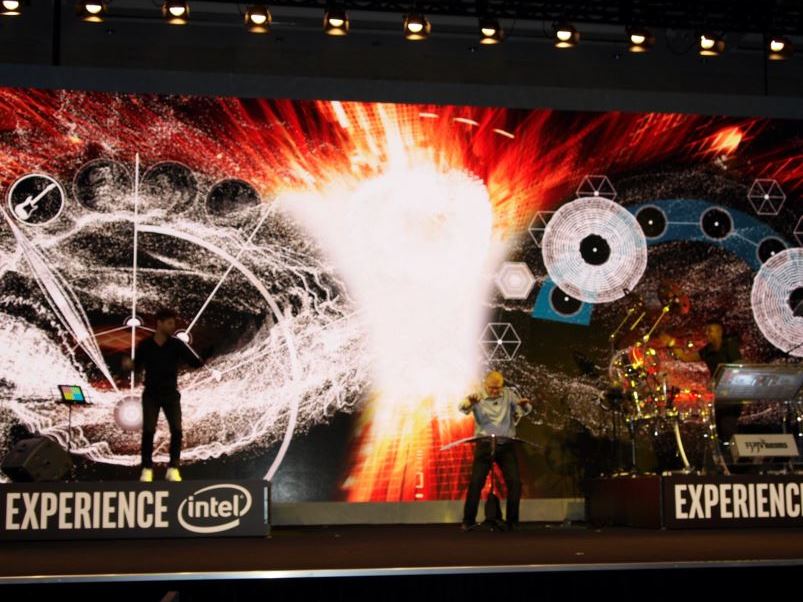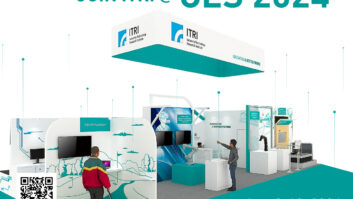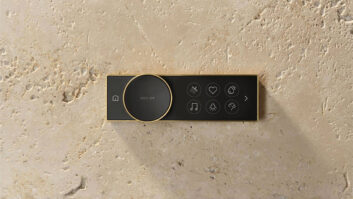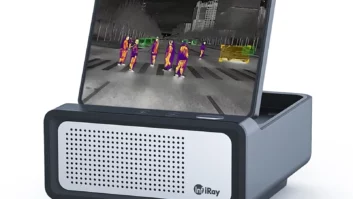
The explosion of computing in connected devices will rival the Cambrian-era explosion in the diversity of life forms, bringing sensor technology to more than 50 billion connected devices in 2020, said Intel new-technology senior VP Josh Walden during his CES Asia keynote.
The Cambrian explosion occurred around 500 million years ago when multicellular organisms developed better sensors to sense their environments, Walden said. In the coming years, the “sensification” of computing through sensors, natural-language processing, and stereoscopic-vision cameras will drive changes in video games, sports, health and wellness products, and virtual reality, he said. Products incorporating some of these technologies will be available this year in China through partner companies using Intel’s 3D RealSense camera technology or Intel’s Curie module, which incorporates a system on a chip (SoC), sensors, and Bluetooth LE technology.
Curie sensor technology will change sports such as snowboarding and biking for athletes and consumers alike, deliver augmented reality experiences for runners and bike riders, save firefighter lives, and enable wearers of virtual-reality headsets to use their hands to move objects in virtual worlds, Walden said. RealSense-equipped drones will follow their users automatically, flying around objects that get in their way. And Curie-wearing musicians will be able to interpret their music visually on a display screen while they play.
Sports broadcasts: Intel will team up with ESPN to add Curie sensors to snowboards during X Games competitions, letting TV viewers see real-time motion data such as speed, G forces on landing, number of spins, speed, and the height of jumps. Snowboarders will be able to view the statistics on their smartphones after completing a run.
Curie will also be able to identify and name the tricks performed by snowboarders and skateboarders, thanks to pattern-matching engine in which Curie’s SoC is trained to recognize movements or gestures.
BMX bikers will also be able to tap Curie’s potential, Walden said.
“Curie will change and revitalize sports for the athlete and consumer,” he said.
In the third quarter, Razer will launch a Stargazer peripheral incorporating RealSense camera to let gamers project a live moving image of their face onto game play that they’re broadcasting over the Internet.
VR impact: A RealSense camera also appeared at CES Asia in a prototype Intel VR headset, which lets wearers use their hands to move objects in the virtual world. It also lets users walk around a virtual world. In July, Haier will be the first company to offer a VR headset with RealSense, Walden said.
At the end of June, Yuneec will ship its RealSense-equipped Typhoon H drone, which will follow its user and fly around or above objects in its path, Walden said.
For its part, Lenovo is demonstrating Curie-equipped smart shoes that let users control the movement of a videogame character by walking in place or gesturing with their feet. The shoes can also be used to control smart lights. An availability date wasn’t announced.
Life savers: Intel’s sensor technologies will also save firefighter lives through a partnership with Honeywell. Curie technology’s pattern-matching capability will let firefighters communicate nonverbally in a smoky environment or let other firefighters know that a firefighter is down, Walden said. Sensors in oxygen masks will let firefighters know if carbon monoxide is entering.
On a lighter note, Walden said Curie will let people create music simply by strapping sensors to their hands and moving their fingers and hands. Curie-wearing musicians will also be able to interpret their music visually on a display screen while they play.













